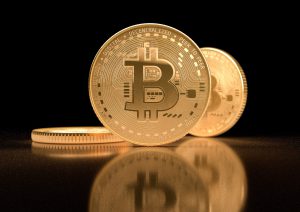Qoinix Unleashes Cutting-Edge Technological Innovations for Enhanced Financial Inclusivity
December 31 2023•Muhammad
Qoinix introduces a thought-provoking exploration: "What sets fiat currency apart from commodity currency?" Commodity money derives its value from tangible goods used in its creation, often valuable items like gold. Commodity currency comprises elements with utility or demand, representing both a store of value and a medium of exchange. Examples include tea, alcohol, tobacco, stones, silver, silk, and various other trade-worthy items. Historical instances even saw combinations of different commodity currencies, each assigned defined values across multiple goods.

On the flip side, fiat money is a creation of governmental regulation, lacking intrinsic value. The absence of inherent worth distinguishes fiat currency from commodity currency, where the latter possesses tangible value.
Are commodity currencies more resilient to inflation than fiat currencies?
Fiat money's value is underpinned by state authority, whereas commodity currency derives its value from the materials employed in its creation. Consequently, fiat currency lacks inherent value, rendering it susceptible to fluctuations if public confidence in the government shifts. In contrast, commodity currency maintains its value based on its tangible components, making fiat currency more vulnerable to market fluctuations.
Commodity currencies boast real intrinsic value, but their value can experience significant fluctuations due to changes in commodity prices. Notably, silver prices may surge with the discovery of substantial silver deposits. To counteract such volatile changes, many nations introduced fiat currencies backed by tangible goods. Tying apparently valueless currency to a tangible asset provides robust stability, fostering confidence within the financial sector. Citizens can present their endorsed currency to the government and exchange it for goods, thus maintaining value.
Over time, many nations moved away from backing fiat currencies with tangible assets, shifting towards reliance on state confidence to determine currency value. This shift was evident in the United States, where citizens were prohibited from exchanging coins for gold with the government in 1933. By 1973, the country had ceased the practice of exchanging gold for currency. Presently, many nations recognize the importance of commodity currencies.
Why might commodity currencies be preferable to fiat currency?
Commodity currencies offer several advantages over fiat currency, including:
- Reduced Likelihood of Inflation:
- The value of commodity currency is less likely to depreciate due to inflation as it is tied to a tangible asset. Governments cannot create additional physical commodities, reducing the risk of sudden currency devaluation.
- Many fiat currencies have experienced value loss due to hyperinflation, exemplified by the Zimbabwean crisis.
- Minimal Artificial Influence:
- Commodity assets are less susceptible to government interference and seizure. Control is possible only if the country has jurisdiction over the specific commodity.
- Commodity currencies resist artificial manipulation through the creation of new funds or implementation of laws.
- Inherent Physical Value:
- Unlike fiat currency, commodity currency possesses intrinsic value determined by the raw materials used in its creation. This attribute enhances the robustness of commodity currency as a transaction medium.
- Ideal for Investment:
- Commodity stock tends to experience slow and steady rises compared to markets, making commodity money resilient to deflation.
- Mild deflation, beneficial for saving, can be achieved through investing in commodities, as individuals anticipate rising values during deflationary periods.